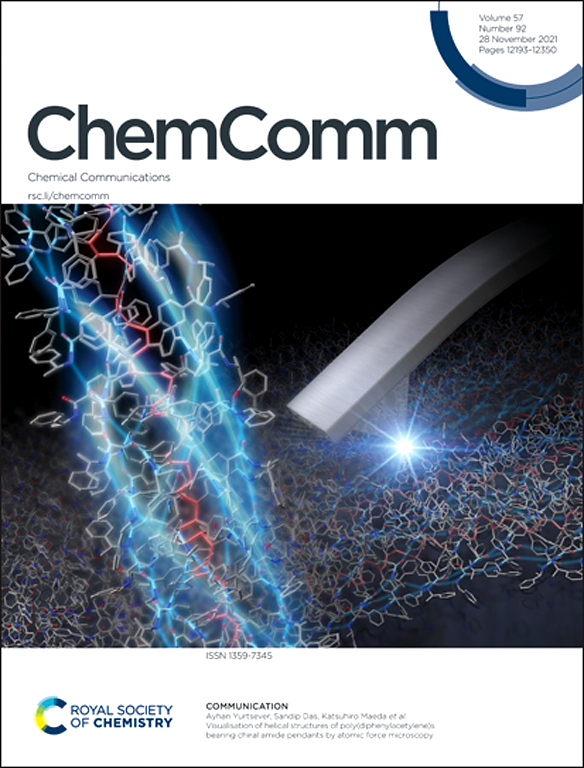可持续地将生物质转化为用于固态超级电容器的先进碳材料:综述。
IF 4.2
2区 化学
Q2 CHEMISTRY, MULTIDISCIPLINARY
引用次数: 0
摘要
生物质衍生碳材料(BDCMs)因其低成本、良好的化学和机械稳定性、优异的导电性和较高的部署可行性,被广泛认为是固态超级电容器(SSCs)电极材料的理想实用候选材料。为了将生物质可持续地转化为具有高电化学性能的固态超级电容器电极材料,最近开展了大量研究,甚至以数据驱动的方法为指导。因此,本综述探讨了基于 BDCM 的电极材料的传统和新兴合成路线,并讨论了用于 SSCs 的 BDCMs 在储能机制和电化学性能增强方面的最新进展,以实用、高效的方式改进 BDCMs 的电极制备和性能优化。机器学习(ML)和三维打印技术是发现和设计新型材料的两种最强大的工具,本文介绍了机器学习和三维打印技术,为准确、高效地生产具有优异电化学性能的 BDCMs 提供了闭环指导;还探讨了成功应用 ML 和三维打印方法所面临的主要挑战,为基于 BDCM 的 SSCs 的潜在创新和未来发展提供了重要指导。在本综述中,从生命周期的角度评估了基于 BDCM 的 SSCs 的环境效益,强调其是巩固能源安全和实现可持续生物质管理的一种有前途的实用替代方法。最后讨论了结束语和未来展望,为学术研究人员和政府决策者提供了宝贵的见解。通过共同努力,以可持续的方式将生物质转化为高性能的 SSCs 电极材料有利于实现联合国可持续发展目标 7、11-13。本文章由计算机程序翻译,如有差异,请以英文原文为准。

Sustainably transforming biomass into advanced carbon materials for solid-state supercapacitors: a review
Biomass-derived carbon materials (BDCMs) are widely considered as promising and practical candidates for electrode materials of solid-state supercapacitors (SSCs), due to their low cost, good chemical and mechanical stabilities, excellent electrical conductivity, and high deployment feasibility. Numerous investigations have recently been conducted for sustainably transforming biomass into electrode materials with high electrochemical performance in SSCs, even guided by data-driven approaches. Therefore, this review addresses conventional and emerging synthesis routes for BDCM-based electrode materials and discusses recent advances in energy storage mechanisms and electrochemical performance enhancement of BDCMs for SSCs, improving electrode preparation and performance optimization of BDCMs in a practical and efficient manner. As two of the most powerful tools for novel material discovery and design, machine learning (ML) and 3D printing technologies are introduced to provide closed-loop guidelines for accurately and efficiently producing BDCMs with excellent electrochemical performance; main challenges for successfully applying ML and 3D printing methodologies are also addressed, providing critical guidelines for potential innovation and future development of BDCM-based SSCs. In this review, from life-cycle perspective, environmental benefits are assessed for BDCM-based SSCs, being highlighted as a promising and practical alternative to solidify energy security and achieve sustainable biomass management. The concluding remarks and future prospects are finally discussed to provide valuable insights for academic researchers and governmental policymakers. With concerted efforts, sustainably transforming biomass into high-performance electrode materials for SSCs is beneficial to achieving UN Sustainable Development Goals 7, 11–13.
求助全文
通过发布文献求助,成功后即可免费获取论文全文。
去求助
来源期刊

Chemical Communications
化学-化学综合
CiteScore
8.60
自引率
4.10%
发文量
2705
审稿时长
1.4 months
期刊介绍:
ChemComm (Chemical Communications) is renowned as the fastest publisher of articles providing information on new avenues of research, drawn from all the world''s major areas of chemical research.
 求助内容:
求助内容: 应助结果提醒方式:
应助结果提醒方式:


